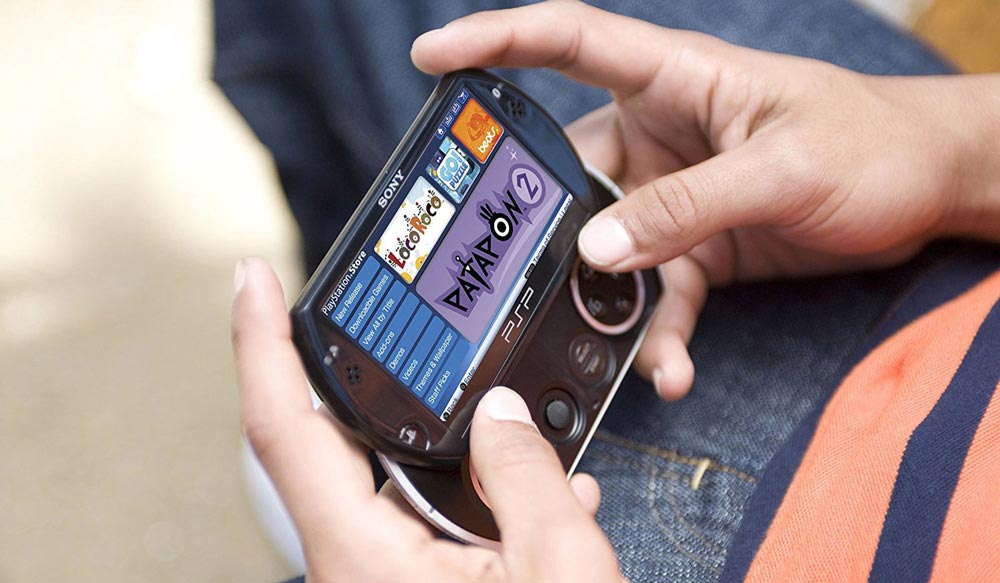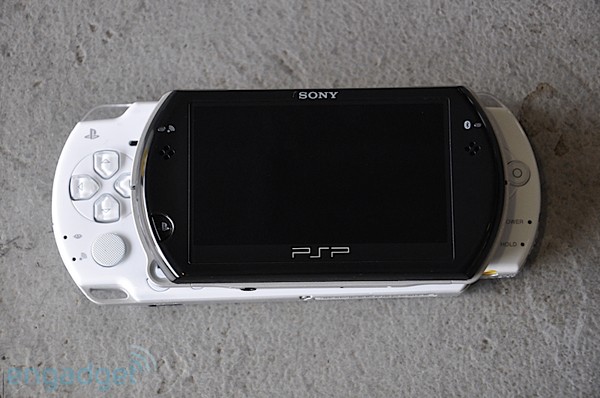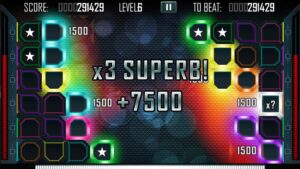
How Sony’s biggest failure led to an indie renaissance
This is one of a few pieces on this site rescued from the digital scrapheap, originally published for a site that’s no longer online. I’ll begrudgingly remove if any shadowy publishing types compel me to relinquish what’s rightfully theirs, despite having unceremoniously binned it themselves, but come on. That’d just be silly.
It’s presented as is, so you’ll have to forgive any outdated references or generally shoddy writing.
–
On October 1st 2009, Sony launched the PSP Go. More than four and a half years after the first model of Sony’s PlayStation Portable handheld launched in the US, here was a svelte redesign with a sliding display and a far less bulky form factor than previous versions. This was enabled by the headlining change: the removal of support for the PSP’s proprietary UMD format and a bold digital-only strategy which meant all games had to be downloaded via the PlayStation Store. It was the first major dedicated gaming platform to take such a stance, and eight years on it remains the only one.
That major platform holders aren’t queueing up to emulate the PSP Go is hardly surprising, given that it’s gone down in history as Sony’s greatest failure. But the system was also described by ex-Sony Interactive Entertainment CEO Andrew House as something of an experiment “to understand where that consumer behavior was going,” and in this respect Sony might have been onto something.
The PSP Go came out when Apple’s App Store had already begun to make mobile games mainstream, but had not yet given rise to the multi-million dollar free-to-play giants we recognize today. Instead, the marketplace bristled with low-priced slices of creativity from small studios that could have only dreamt of such exposure previously, and certainly weren’t represented on PlayStation. Sony’s response was “PlayStation minis,” a program that launched alongside the PSP Go with the intention of lowering the barriers to independent developers. Minis were inexpensive, usually priced at around the $4.99 mark, and were subject to a 100MB size limit. They were playable first on PSP, then later on PS3 and PS Vita.

Size comparison between the PSP Go and then-current PSP 2000
“The initial plan was to get us involved in doing something that was a little bit more fluid from a development point of view with the indies, to get those guys on board,” Neil Soane, who was at the time a European Account Manager liaising with minis developers at Sony, tells Zam in an interview. “It was generally felt that there wasn’t enough input from the smaller devs, and that there was this huge void between what was coming out on the larger PlayStation platforms and everything else.”
With mobile gaming such a clear influence, developers who had worked on those platforms were among the first to be courted by Sony. “I went to Mobile World Congress in Barcelona and sat down with many game developers,” explains Soane. “People that had probably never dealt with Sony before because they just thought that the entry barriers were way too high for them to even be involved. This was an opportunity for them to get their content out on a mainstream dedicated game platform.”
But while Angry Birds and some lesser-known early works from Jetpack Joyride developer Halfbrick came to PSP through the program, it wasn’t mobile developers who ended up defining PlayStation minis. It was the developers that really wanted to be on PlayStation, not those who used it as a secondary platform, which predictably came closest to fulfilling the program’s potential.
One such developer was Laughing Jackal, a newly independent studio that, prior to minis, had only developed two casino games for the Nintendo DS. Senior Producer Alasdair Evans remembers being contacted by Soane with the pitch for minis ahead of their launch. “They sort of gave us a heads-up: this is coming, we’re looking for these kinds of games,” Evans recalls. “They had a limited budget at that time to encourage developers to get on board, so that took a little bit of the risk out of it. It was also just an appealing thing to be doing; it was in line with where we were at the time, because we’d only just started independent development. It fitted our scope, and we were learning as we went.”

Laughing Jackal’s first game for minis, Cubixx, had a simple concept: it resembled the classic arcade game Qix, but on a cube rather than a flat square. The road from concept to approval by Sony took only ten weeks, which was unheard of for indies working with PlayStation at the time.
That Laughing Jackal was able to keep up the pace, eventually releasing 10 games on minis in just over two years, is partly down to the pared-back approach necessitated by the 100MB size limit. Evans adds that this also allowed the company to take on “more risks than we might have done otherwise, more out-there concepts.” But it also had a lot to do with stripping away much of the red tape, which is one of the crowning achievements of the PlayStation minis program.
Indeed, one of the ways Sony intended to court indie developers with minis was by not subjecting them to the same content approval process developers faced for full PS3 and PSP games. The formal approval process at that time was so daunting that it struck fear into the hearts of many indies. For Shahid Ahmad, who led the developer relations team handling minis, the relaxed approval process the initiative spearheaded was a small-scale realization of a long-term goal. “I’d always wanted PlayStation to be more open, and I’d explored that kind of thing before, but it was not happening,” Ahmad tells Zam.
Soane confirms that there was a real fear abroad regarding PlayStation’s approval processes. “That was the major problem at the time with PlayStation,” he states. “There were a lot of whispers in the industry that you had to have a minimum level of quality to go through the evaluation process, and that if the quality wasn’t there, you just won’t get in.”

LittleBigPlanet (Media Molecule, 2009) was one of several ‘big name’ games meant to prop up Sony’s sparse PSP and PSP Go offerings.
This is why, with minis, Ahmad believes that openness was by far and away “the most important part of that message.” Much of his time in that period was spent emphasising this to developers.
But like the PSP Go itself, which tested a futuristic digital model on long-in-the-tooth hardware rather than risking it on an entirely new system, minis were a safe place for Sony to try out new ideas while elsewhere things continued as normal.
“It was still limited,” admits Ahmad. “It was its own category, and [it was] very clear that it was a smaller category. The whole idea of having a diminutive term to describe the program was just to reduce the amount of corporate fear there was about supposedly opening up the floodgates. I think Head Office was slightly suspicious of this, and didn’t want to dilute things too much.”
Minis never broke out of their cozy little section on the PlayStation Store enough to set the world alight, but some developers benefited massively. James Marsden, Managing Director of indie studio FuturLab, describes minis as having been “the only viable route for small teams” to get their games on PlayStation at the time. FuturLab has since launched full games on PS Vita, PS4 and PS VR.

On the commercial side, Laughing Jackal’s Alasdair Evans reveals that his company’s minis releases “paid for themselves. They didn’t make us masses, but they kept the wolf from the door and they got us further on so we were able to do bigger scope stuff.” A roaring success, then, in indie game development terms.
From Sony’s side, minis also did well enough to prompt another bite of the cherry with PlayStation Mobile, another indie-friendly initiative designed this time for PS Vita and selected Sony mobile devices. By this time Shahid Ahmad was in business development, playing a central role in getting games on PlayStation Mobile, and those that excelled on minis weren’t forgotten.
“Minis gave us an opportunity to show that we could make great games with very small budgets,” says James Marsden. “And so when Shahid Ahmad began scouting for PS Mobile content – he signed three FuturLab games for PS Mobile – what we’d accomplished on minis directly resulted in contracts on PS Mobile and PS Vita.”
“In those early days we opened the doors to the likes of Honeyslug, FuturLab, Dakko Dakko,” adds Ahmad. “All companies that I carried on working with for a long time. The main thing for us was getting these people exposed on Vita.”
Little did Ahmad know, he would soon have an opportunity to do this on a much larger scale. With the Vita’s threadbare catalogue looking unlikely to revive worrying sales figures, higher-ups brought Ahmad in to take his small-scale successes with minis and PS Mobile and apply it to Sony’s struggling handheld. “I worked to create a plan for how we could refocus Vita and, in the process, get a lot of software onto it,” Ahmad says. “It was a really ambitious plan… It was not looking good for Vita, and we needed to do big things to fix it.”
That plan, not unlike Ahmad’s approach with minis, was to appeal to indie developers and make it as easy as possible for them to work with PlayStation. Processes were streamlined, some titles funded out of Sony’s pocket, and developers were given the best possible access to devkits. Sony’s infamous content approval process, while technically still in place, was implemented far more loosely.
“We had carte blanche to ride roughshod over company policy,” Ahmad enthuses. “To me, that was the biggest win.”
With a wave of indie releases resulting in a renewed swell of positivity around the PlayStation Vita in 2013, Ahmad’s reputation was growing. This enabled him to act even more boldly, letting some indie studios working on Vita games to also dabble on the unreleased PS4. He admitted this to his superiors when internal questions arose over the size of PS4’s launch lineup, and his plan to bolster it with indies was approved.

This led to Ahmad on stage at Gamescom 2013, where he announced that Volume, Hotline Miami 2, Nuclear Throne and Rogue Legacy would be console excluives for PS4 and PS Vita. “It was just killer,” he recalls. “Between 2013 and 2014 it was indie heaven at PlayStation.”
“I found myself at the centre of just about everything, having been on the extreme fringes to begin with.” A rather poetic example of this is that in 2014, Sony launched a boxed ‘Indie Game Mega Pack’ for the PS Vita. Not only did this mark the Vita’s complete transformation to being an indie-focused platform, the collection also featured three games that began life as minis.
And so too, against all odds, have the principles behind minis broken out of their subsection to flood the entire PlayStation Store – and indeed the games industry as a whole.
“You want to build a reputation that’s attractive, a reputation for fairness, a reputation for approachability,” concludes Ahmad, describing the core tenets of his vision for PlayStation since the minis era. These are no longer merely things that Sony, Microsoft and Nintendo are experimenting with; they are crucial to their very survival. This is what the PSP Go gave its life for.
